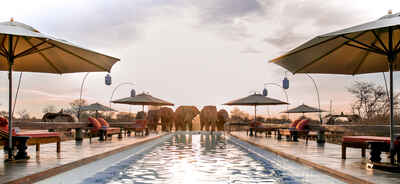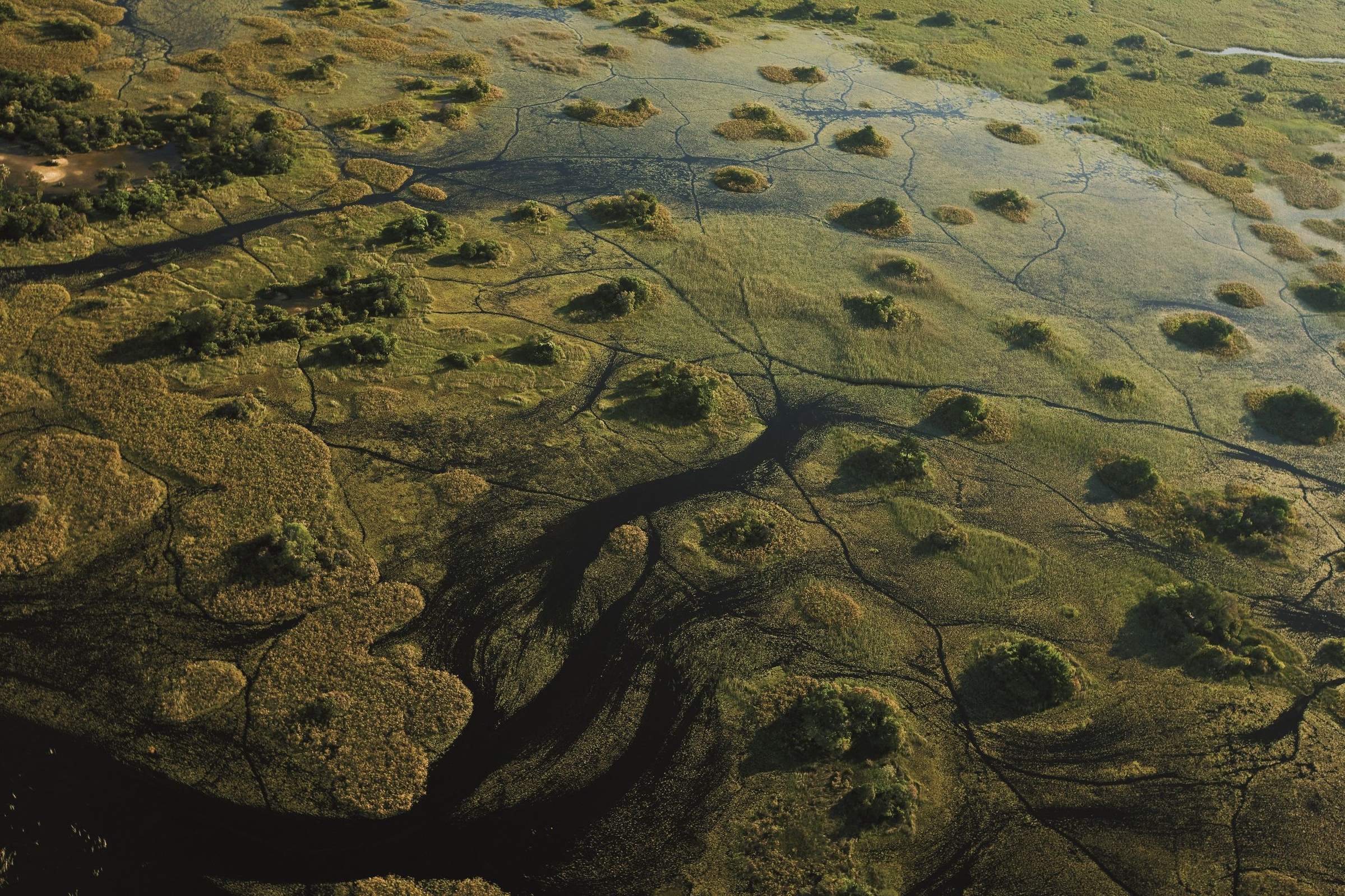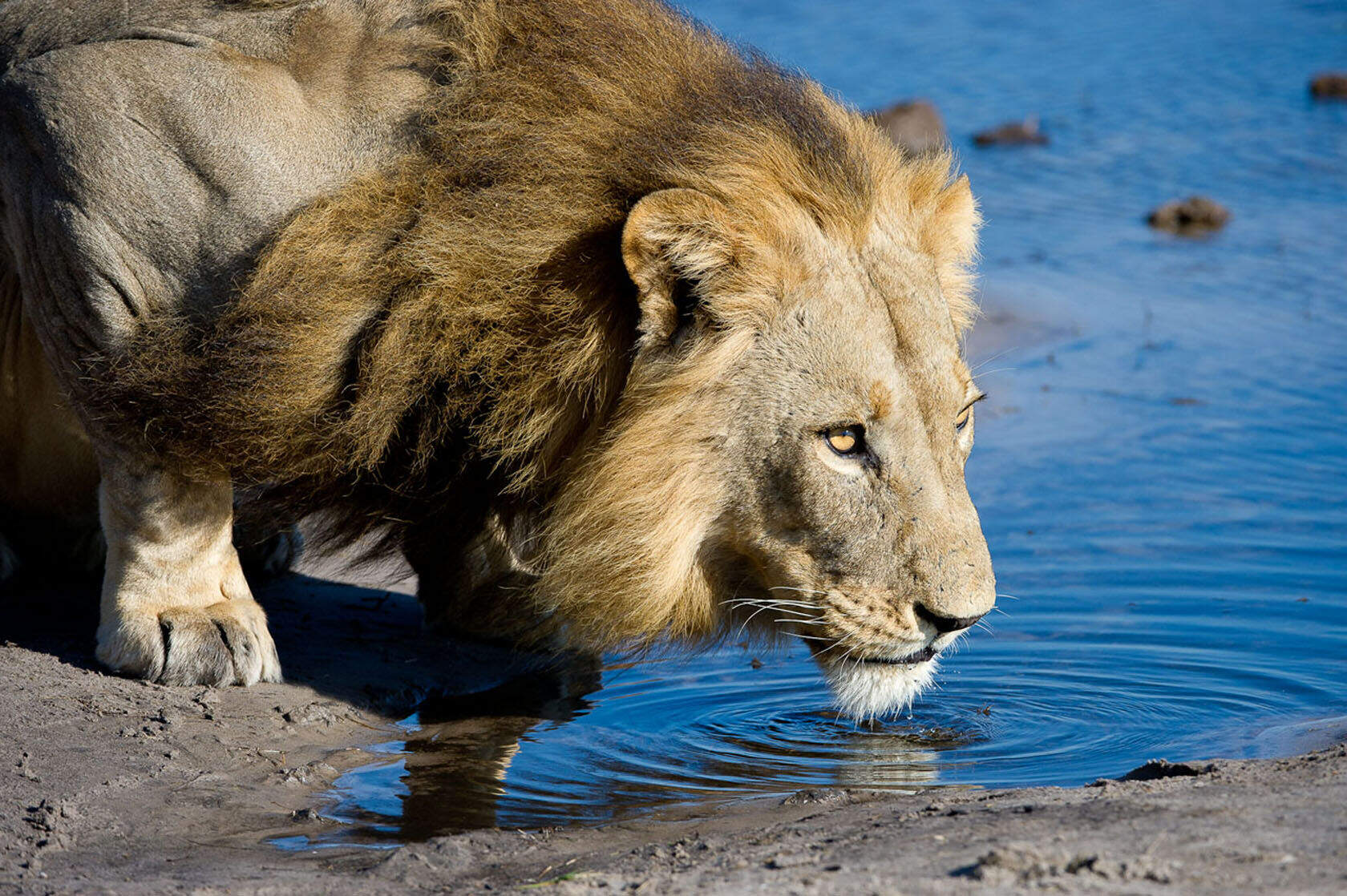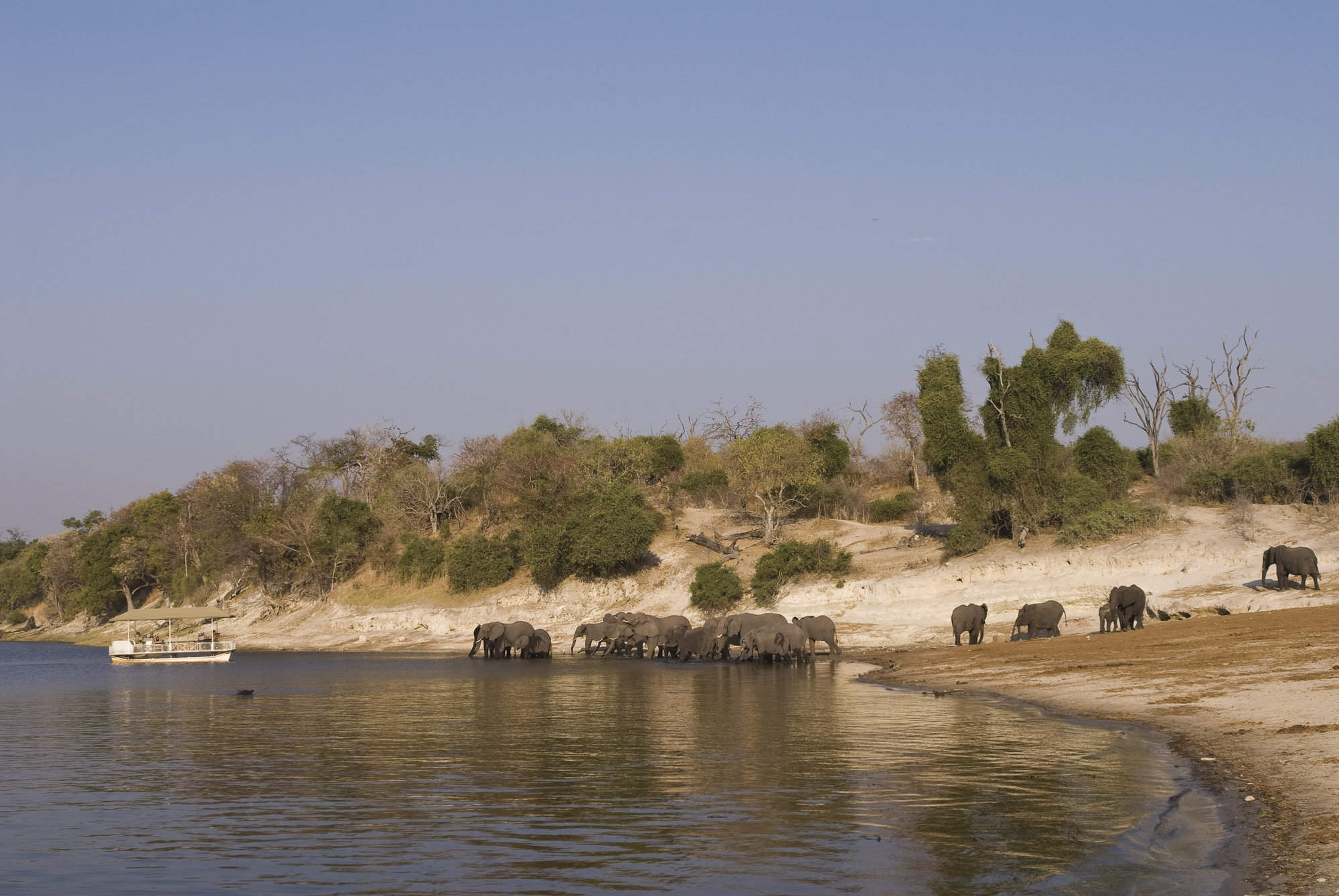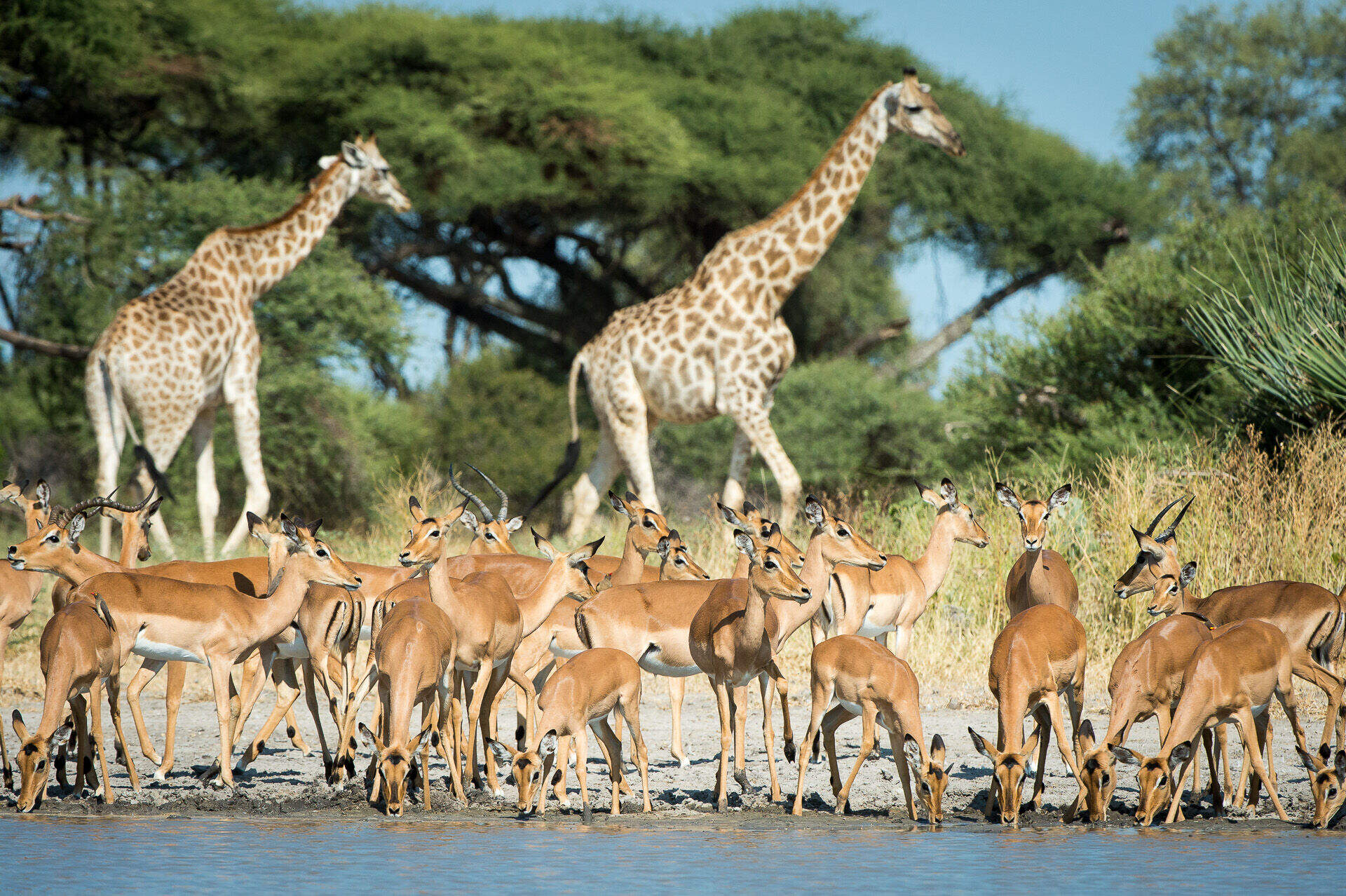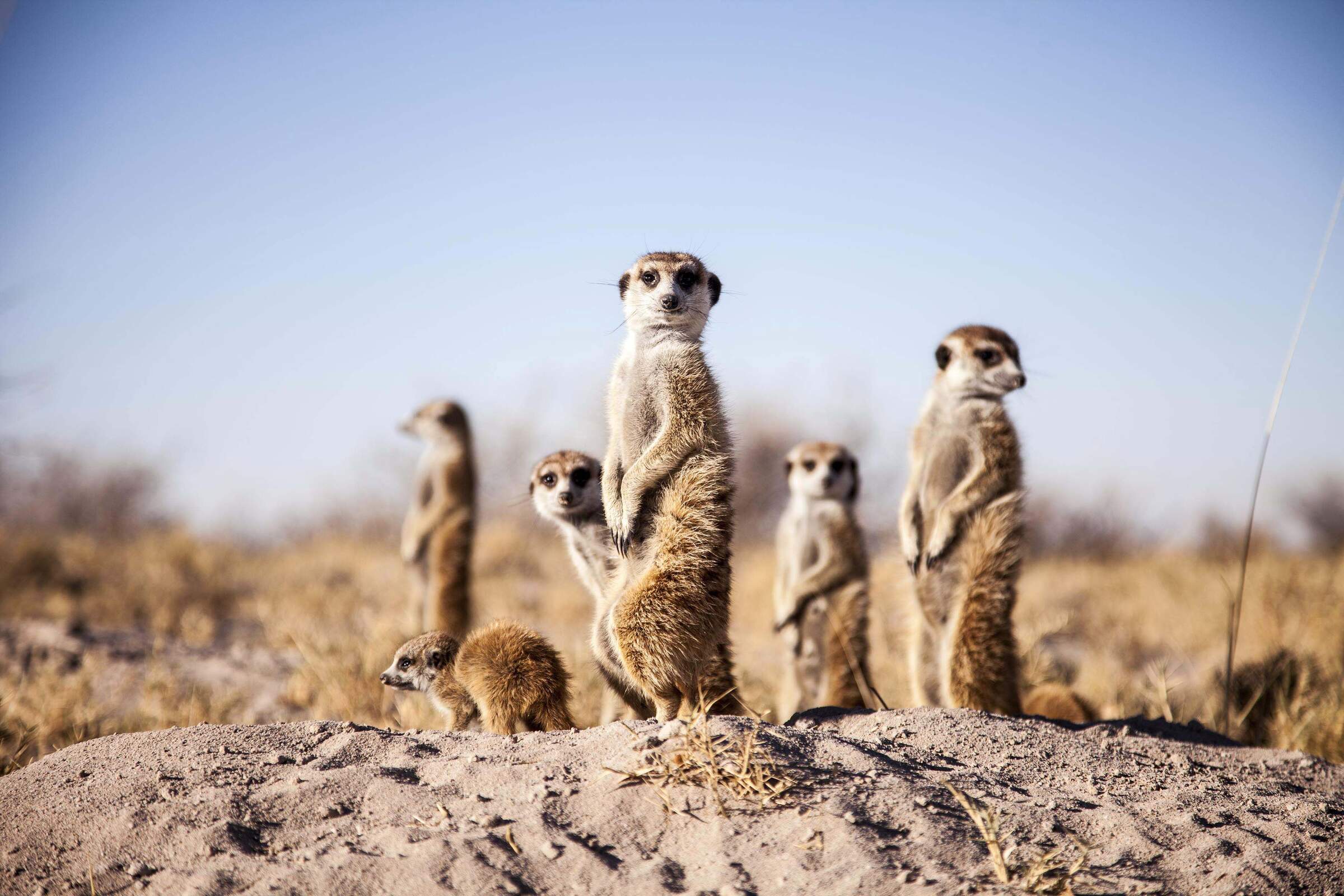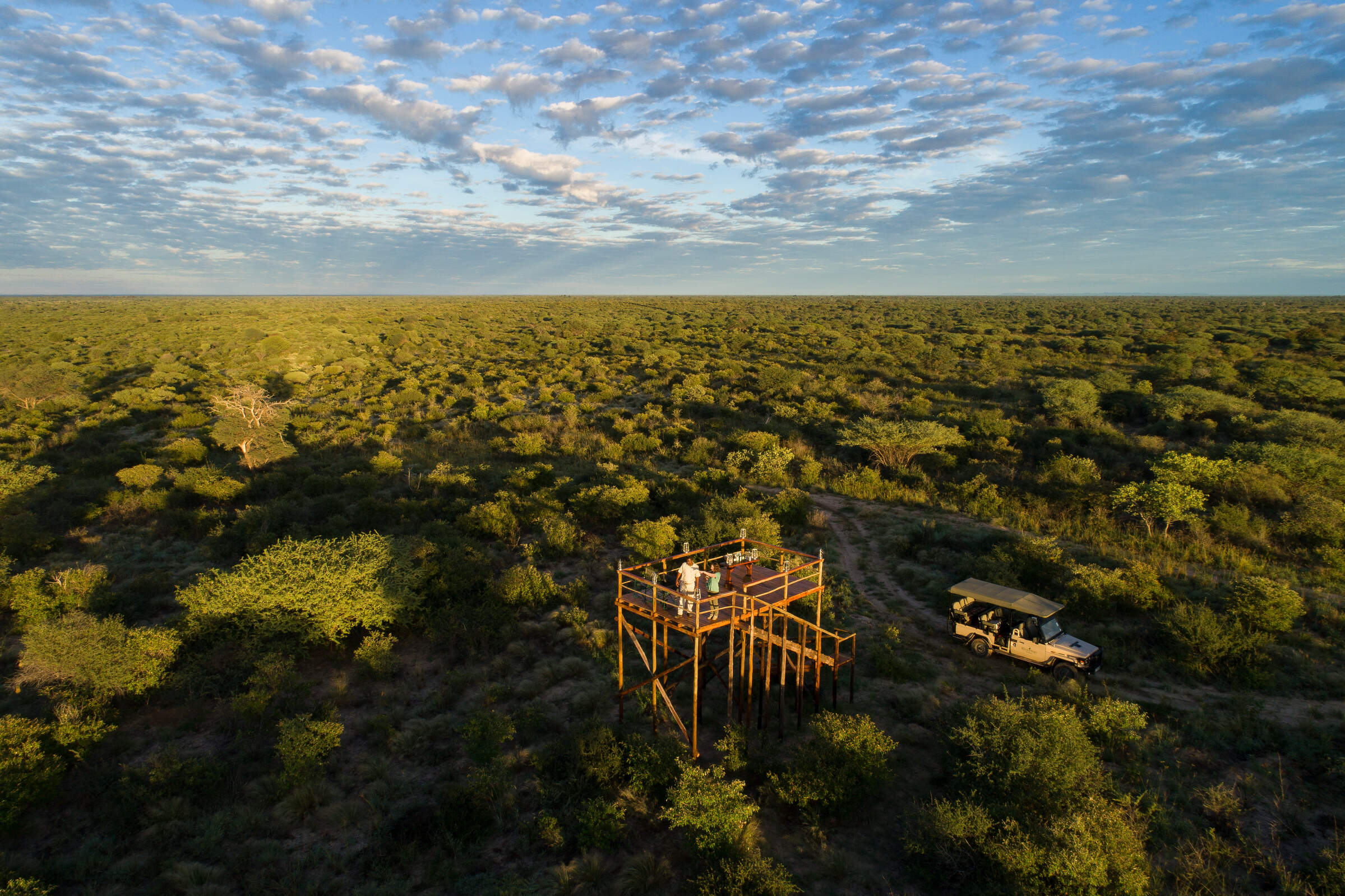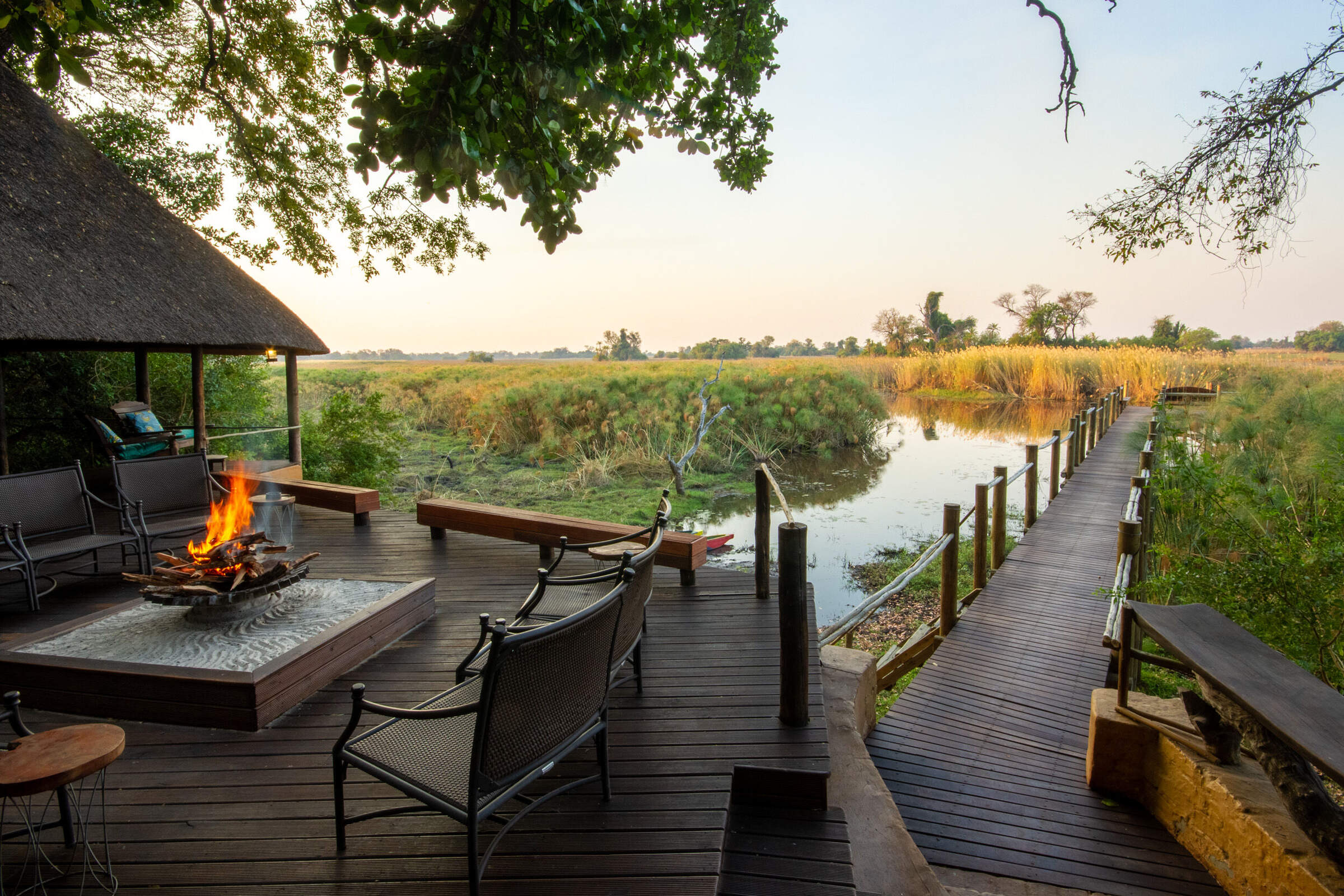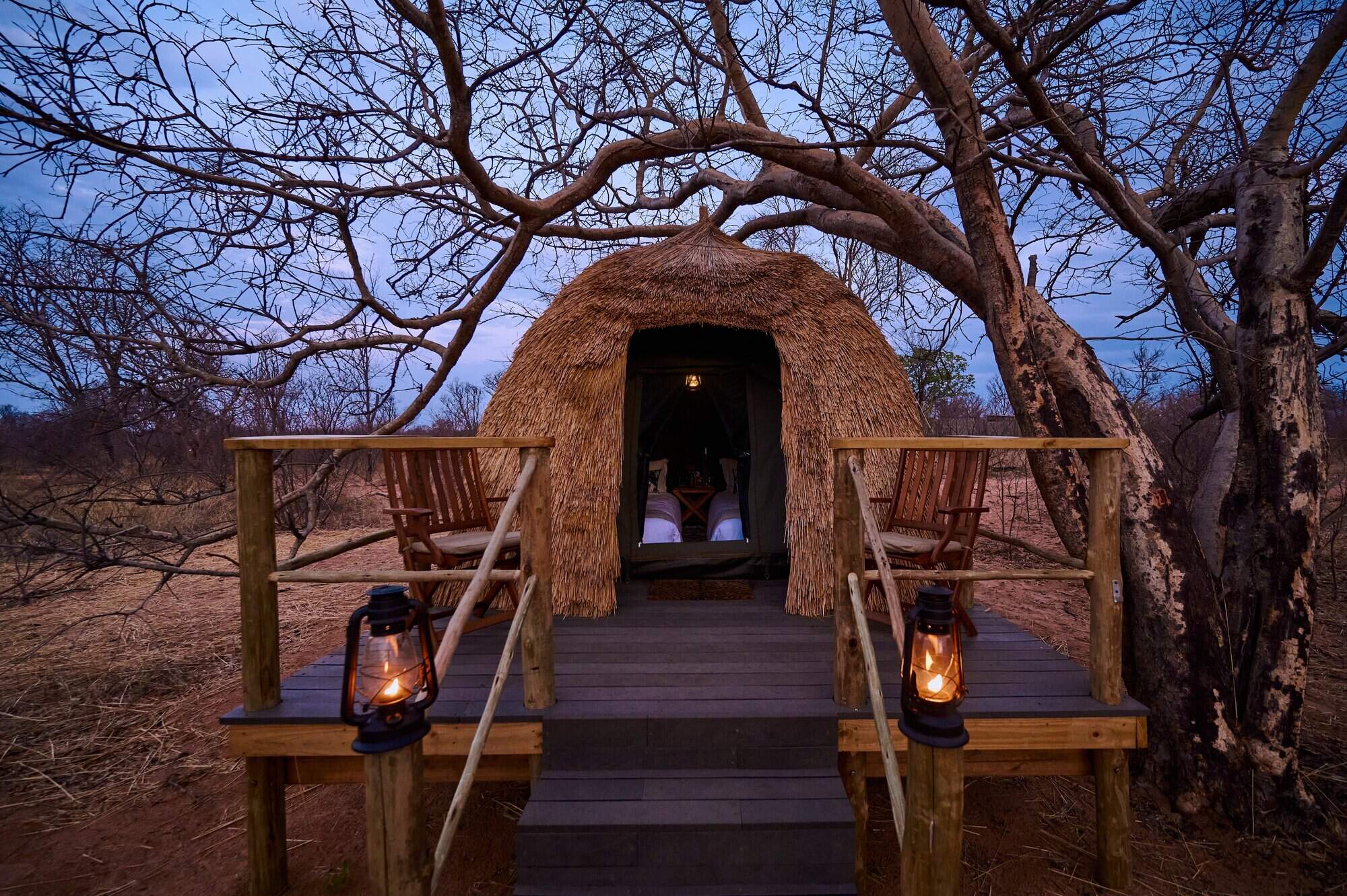About The Lodge at Feline Fields
Feline Fields is set in the seldom visited north-west of Botswana, with views across the Kalahari.
It's also sometimes being called 'The Lodge' or, more fully, 'The Lodge at Feline Fields' and is located 100km from Xai Xai and 63km from the Gcwihaba Caves.
In this very isolated, remote location it offers some unusual and interesting Bushman cultural experiences.
However, this part of the Kalahari is a harsh place for animals to eke out an existence and the bush is thick, so game sightings are rare.
Having visited the lodge, we thoroughly enjoyed our time at Feline Fields. Building a lodge in this area is certainly a risk and we wish the team luck; what they have achieved is spectacular, and offers the opportunity to explore an area that is rarely visited.
However, this is not a big-game destination so a stay here would work best either using the Khwai–Kalahari experience, or combined with a bespoke safari arranged by us.
- Accommodation
- 3 chalets, 3 suites
- Children
- Best for 12+
- Open
- All year
Activities

4WD Safari

Birdwatching

Cultural excursion

Guided walking safari

Helicopter

Night drive

Private activities

Looking for inspiration on where to travel next?
Visit our trip chooser to explore your options and find inspiration for your perfect African adventure
Inspire me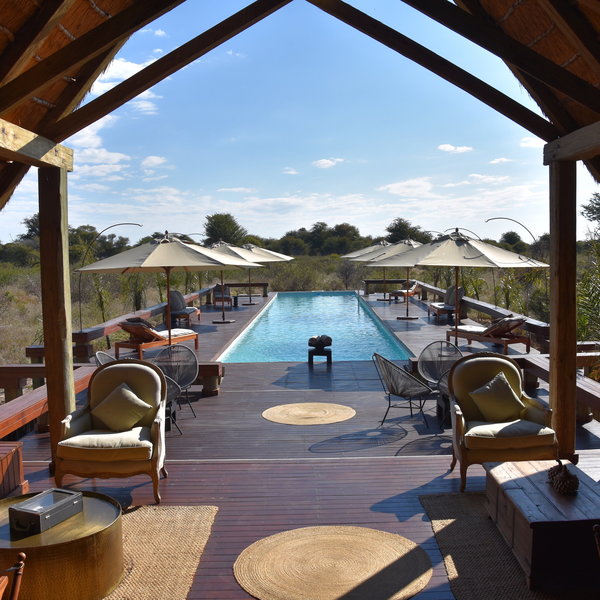
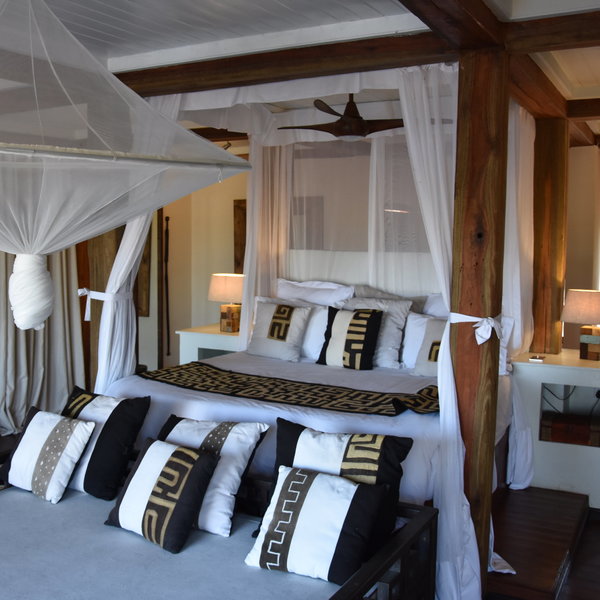
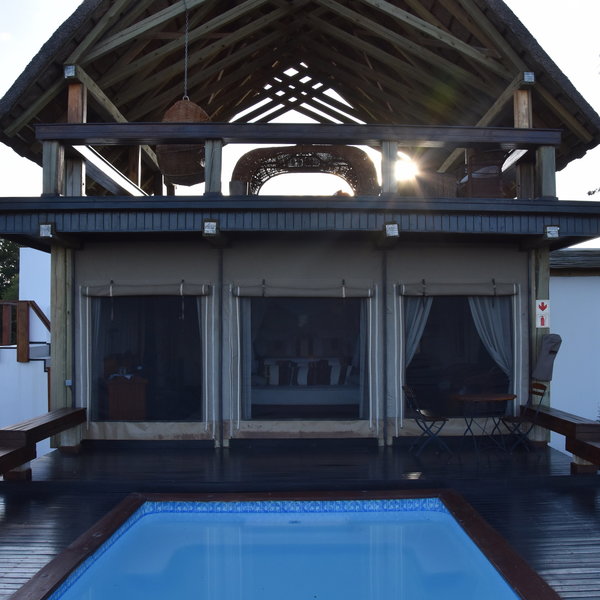
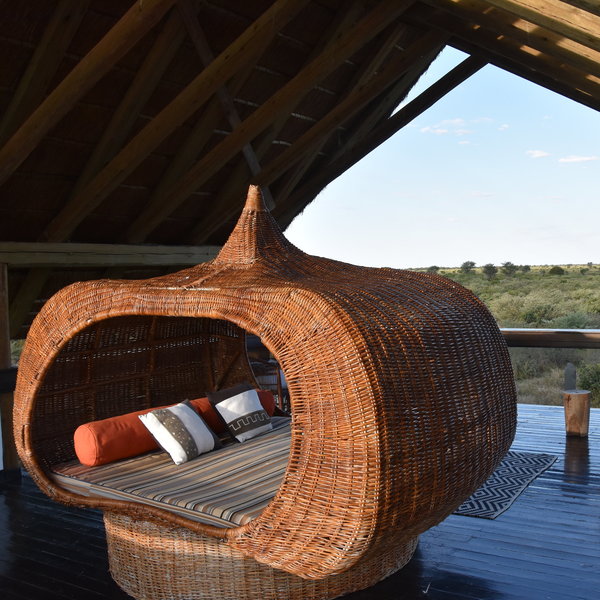
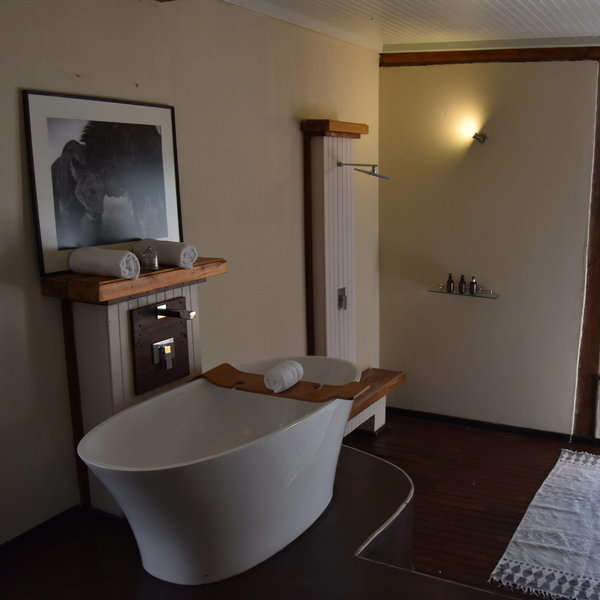
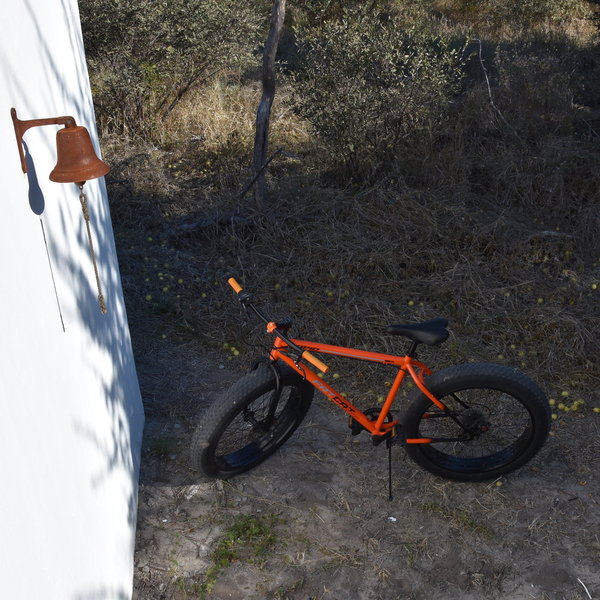
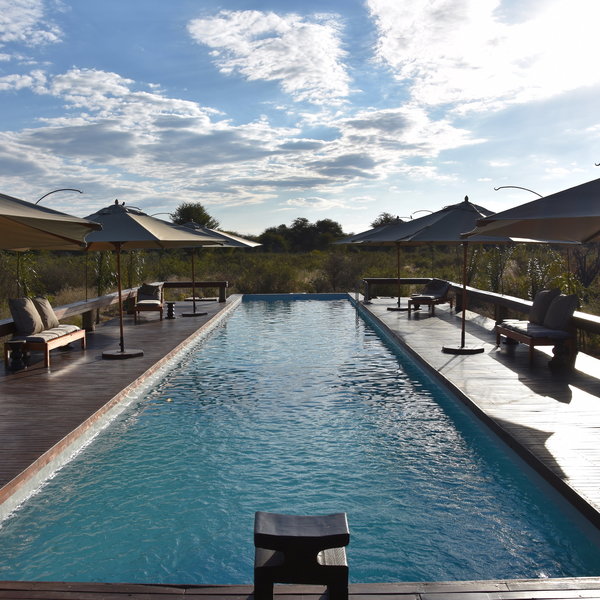
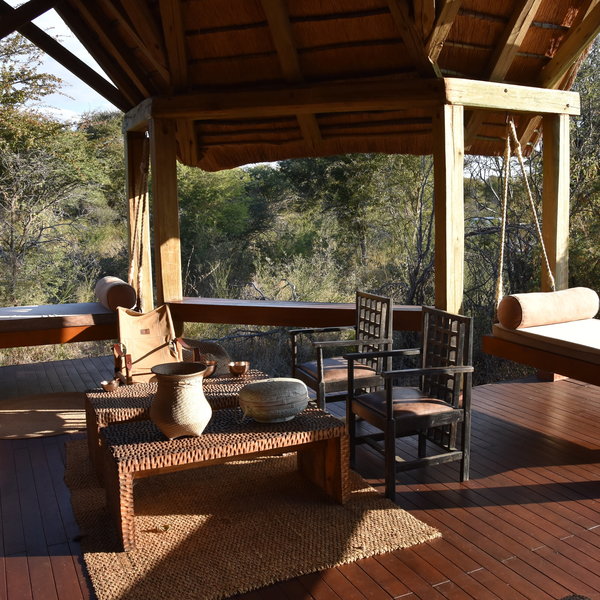
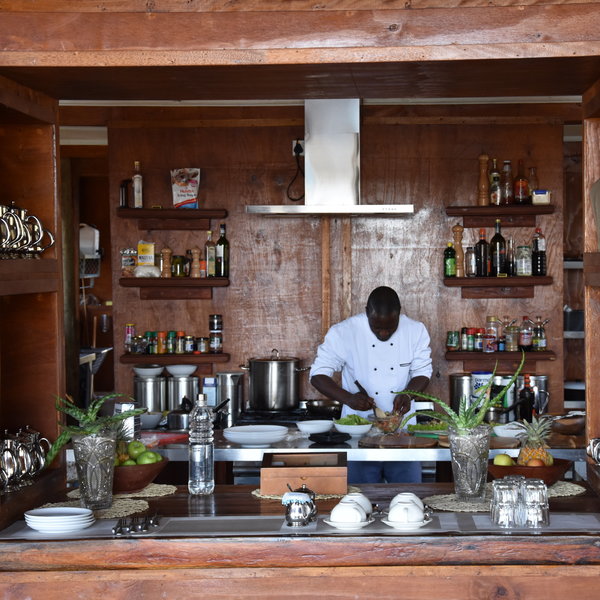
Expert Africa's gallery
When we travel we take lots of photos ourselves to give you a real and un-edited view of the safaris. See our 9 pictures of Feline Fields to get the candid view.
View galleryThe Lodge at Feline Fields's location
Look closer at the environment and surroundings of Feline Fields.
When to go to North-west Kalahari & Panhandle
Our month by month guide: What it's like to visit Feline Fields in North-west Kalahari & Panhandle
Jan
Feb
Mar
Apr
May
Jun
Jul
Aug
Sep
Oct
Nov
Dec
North-west Kalahari & Panhandle in January
The Okavango Panhandle is at the height of its rainy season, with short but intense evening showers creating a lush and vibrant landscape. Nxamaseri Lodge offers outstanding birding opportunities, as migratory species begin to arrive in large numbers. The swelling Okavango River provides perfect conditions for boat safaris, showcasing the area’s unique ecosystems. Fishing in the Panhandle picks up as water levels rise, attracting keen anglers.
At Tsodilo Hills, the rock art becomes more vivid against the green backdrop. Despite the rains, this UNESCO World Heritage Site remains accessible, offering a unique mix of natural beauty and cultural history. Rain-filled rock pools reflect the ancient rock paintings, adding an enchanting dimension to the experience.
In the Kalahari Desert, Feline Fields presents a more dispersed wildlife experience due to the abundance of water, but the vast landscape is breathtaking.
- Warm days with occasional thunderstorms
- Spectacular birdlife with migratory species arriving
- Rising water levels ideal for boat safaris
- Tsodilo Hills accessible but prepare for rain
- Low visitor numbers and good lodge availability
Our view
A good time to visit, with pros & cons
Weather in January
North-west Kalahari & Panhandle in February
Heavy rains continue in the Okavango Panhandle, sustaining the lush and vibrant landscapes. At Tsodilo Hills, the hiking trails may become slippery, but the vivid rock art framed by verdant backdrops makes it worthwhile. Water-based activities at Nxamaseri Lodge are at their peak, with mokoro trips offering intimate views of the Delta’s beauty. Fishing remains excellent due to the high water levels in the Okavango River.
Feline Fields provides a striking contrast between the water-abundant Delta and the arid Kalahari. Birdwatching throughout the region is exceptional, with many species nesting and breeding. The Panhandle’s lagoons and channels teem with life, creating unique photographic opportunities. Cultural experiences with local communities near Tsodilo Hills offer fascinating insights into traditional practices during the wet season.
- Warm days with frequent thunderstorms
- Birdlife at its peak, ideal for bird enthusiasts
- Mokoro and fishing activities thriving
- Tsodilo Hills rock art vivid after rainfall
- Low-season rates available at Kalahari camps and lodges
Our view
This is not a great time to visit
Weather in February
North-west Kalahari & Panhandle in March
The rainy season begins to taper off, and clear days become more common in the Okavango Panhandle. Drying hiking trails make Tsodilo Hills’ ancient rock art sites more accessible. Nxamaseri Lodge sees increased wildlife activity as animals re-emerge. The receding Okavango River concentrates fish, attracting predators and enhancing fishing opportunities.
The Panhandle remains lush, with birds and wildlife still raising their young. Fishing for tigerfish is especially productive. As the rains diminish, guided tours at Tsodilo Hills provide easier access and deeper insights into the region’s cultural significance.
- Warm temperatures with occasional rains
- Excellent conditions for Tsodilo Hills exploration
- High Panhandle waters perfect for mokoro safaris
- Birdlife still abundant, fishing opportunities improving
- Fewer visitors and favourable rates at lodges
Our view
A good time to visit, with pros & cons
Weather in March
North-west Kalahari & Panhandle in April
April marks a transitional period in the Okavango Panhandle as the rains subside. Tsodilo Hills offers perfect hiking conditions with cooler evenings and dry trails. Water activities at Nxamaseri Lodge benefit from calmer waters and increased animal sightings. The stabilising Okavango River provides excellent opportunities for both boating and fishing.
Game viewing improves at Feline Fields as vegetation thins, making wildlife easier to spot. Birdlife remains diverse, with some migratory species still present. As surface water dries up, animals congregate around permanent water sources. The vivid contrast of Tsodilo Hills’ rock art against the drying landscape is striking. Cultural visits to San communities near Tsodilo Hills reveal traditional practices during this seasonal shift.
- Cooler evenings with occasional showers
- Mokoro trips at their best and good fishing
- Tsodilo Hills trails ideal for hiking
- Increased wildlife visibility in the Panhandle
- Shoulder season begins with favourable rates
Our view
A good time to visit, with pros & cons
Weather in April
North-west Kalahari & Panhandle in May
The dry season begins, bringing cool mornings and evenings to the Okavango Panhandle. Tsodilo Hills becomes a haven for hikers and rock art enthusiasts, with excellent conditions. Nxamaseri Lodge offers exceptional fishing opportunities as water levels drop and fish concentrate. Wildlife along the Okavango River becomes easier to spot as animals gather at its banks.
The drying landscape at Feline Fields enhances predator sightings, as hunting conditions improve. Birdwatching remains rewarding, particularly in shrinking wetlands. Mokoro trips in shallower waters allow for close encounters with Delta wildlife. The arrival of Angola’s floodwaters in the northern Delta signals a unique ecological transition.
- Cool mornings, low chance of rain
- Water-based activities thriving in the Panhandle
- Ideal rock art viewing conditions at Tsodilo Hills
- Excellent fishing opportunities, particularly for tigerfish
- Shoulder season rates available
Our view
A very good time to visit
Weather in May
North-west Kalahari & Panhandle in June
The Okavango Panhandle experiences cool, dry conditions. The clear winter light beautifully highlights Tsodilo Hills’ rock art, making it an ideal time for exploring this cultural treasure. Nxamaseri Lodge offers outstanding game viewing as wildlife congregates around water sources, and the Okavango River attracts a diverse range of animals, creating stunning scenes. Night game drives at Feline Fields take full advantage of the cooler weather.
The thinning vegetation in the Panhandle improves wildlife visibility. Fishing remains productive, particularly for tigerfish, and birdwatching is rewarding with many water birds in view. Mokoro trips offer tranquil Delta experiences, while Tsodilo Hills’ hiking trails provide sweeping views of the surrounding landscape. Visitors can also enjoy cultural exchanges with local communities, gaining insights into traditional winter practices.
- Warm days, cold nights
- Clear skies perfect for stargazing
- Mokoro trips popular for serene wildlife encounters
- Tsodilo Hills hikes comfortable in cool weather
- Peak season begins, with higher rates at lodges
Our view
Fantastic: the very best time to visit
Weather in June
North-west Kalahari & Panhandle in July
The Okavango Panhandle reaches its coolest month, providing perfect conditions for exploring Tsodilo Hills’ rock art and hiking trails. Nxamaseri Lodge offers peak game viewing as wildlife concentrates near dwindling water sources. The Okavango River becomes a vital lifeline, creating dramatic wildlife scenes. Early morning and night game drives at Feline Fields are rewarding but chilly - packing warm clothing is essential.
The dry landscape of the Panhandle enhances wildlife visibility. Fishing is at its peak, especially for tigerfish, while birdwatching remains excellent with large numbers of water birds. Mokoro trips allow for intimate encounters with Delta wildlife, and Tsodilo Hills’ spiritual significance is amplified in the crisp winter air. Local San communities offer cultural insights into traditional survival techniques during the dry season.
- Comfortable days, cold nights
- Excellent fishing for tigerfish in the Panhandle
- Tsodilo rock art vivid in dry conditions
- Wildlife concentrated around water sources
- Peak season - advance booking for lodges is essential
Our view
Fantastic: the very best time to visit
Weather in July
North-west Kalahari & Panhandle in August
The Okavango Panhandle remains dry, with temperatures gradually rising. Tsodilo Hills’ rock art is immaculately preserved in the dry conditions, offering excellent opportunities for photography. Nxamaseri Lodge provides exceptional game viewing and fishing, as animals and fish concentrate around the shrinking water sources. The Okavango River attracts diverse wildlife, creating spectacular photographic moments.
At Feline Fields in the Kalahari, game viewing continues to improve as animals gather near water sources during the late dry season. The Panhandle’s parched landscape offers unobstructed views of wildlife. Birdwatching is rewarding, with species congregating around remaining water bodies. Mokoro trips provide serene experiences, while Tsodilo Hills’ trails showcase panoramic views of the arid surroundings.
- Dry, warm days with cool nights
- Panhandle fishing at its peak
- Tsodilo Hills ideal for photography
- Mokoro trips offer close wildlife encounters
- High season with lodges often fully booked
Our view
Fantastic: the very best time to visit
Weather in August
North-west Kalahari & Panhandle in September
Rising temperatures define September in the Okavango Panhandle. Tsodilo Hills offers warm yet comfortable conditions for exploring its rock art and hiking trails. At Nxamaseri Lodge, game viewing intensifies as animals concentrate around remaining water sources. The Okavango River becomes even more vital for wildlife, offering incredible scenes of activity. At Feline Fields herds gather near the scatted waterpoints in the Kalahari.
The dry landscape in the Panhandle enhances wildlife visibility, while on the water, September marks the start of the barbel run, attracting an array of fish and their predators. Mokoro trips provide close encounters with wildlife in shallow waters and birdwatching is exceptional, with migratory species beginning to arrive. Cultural experiences with local communities provide insights into traditional fishing and hunting techniques during this transitional period.
- Warmer days, cool nights
- Annual barbel run attracts tigerfish
- Tsodilo Hills trails dry and easily navigable
- Excellent birdwatching with returning migratory birds
- Peak season continues, advance booking essential
Our view
Fantastic: the very best time to visit
Weather in September
North-west Kalahari & Panhandle in October
October is the hottest month in the Okavango Panhandle, with Tsodilo Hills’ rock art and panoramic hiking trails best viewed in the early mornings or late afternoons. Nxamaseri Lodge continues to offer excellent game viewing near the remaining water sources. The Okavango River supports diverse wildlife, creating dramatic scenes as October also sees the peak of the barbel run. Birdwatching is at its prime with numerous migratory species arriving. Mokoro trips in shallow waters provide unique and intimate wildlife encounters.
At Feline Fields, the Kalahari’s stark, arid landscape offers unobstructed wildlife viewing. Cultural experiences with local communities offer insights into traditional practices for surviving this hottest period of the year.
- Hot days, chance of rain late in month
- Last chance for Panhandle fishing season
- Tsodilo Hills hot but rewarding for rock art
- Water levels low, affecting some activities
- Final month of peak season at most lodges
Our view
Fantastic: the very best time to visit
Weather in October
North-west Kalahari & Panhandle in November
November brings the beginning of the rains and the green season to the Okavango Panhandle. Tsodilo Hills’ rock art becomes even more striking against the greening landscape. At Nxamaseri Lodge, wildlife begins to disperse as new water sources emerge, shifting the dynamics of game viewing. The Okavango River’s rising levels signal the start of the Delta’s transformation.
The first rains breathe life into the Kalahari at Feline Fields, with the arid landscape turning green. The Panhandle’s ecosystem also begins to flourish, while fishing remains productive as the barbel run concludes. Birdwatching is outstanding, with both resident and migratory species present. Mokoro trips offer unique perspectives of the changing landscape. Cultural interactions at Tsodilo Hills include rain-welcoming ceremonies that celebrate the renewal of the land.
- Hot days, increasing chances of rain
- Water levels rising in the Panhandle
- Tsodilo Hills best explored in early morning
- Migrant birds arrive, excellent birdwatching opportunities
- Shoulder season begins, offering lower rates
Our view
A good time to visit, with pros & cons
Weather in November
North-west Kalahari & Panhandle in December
The Okavango Panhandle is in full rainy season. The swelling Okavango River revitalises the Delta region, transforming the landscape into a vibrant, green paradise, criss-crossed with newly formed channels and lagoons, and teeming with new life. Mokoro trips navigate through newly flooded plains, and Nxamaseri Lodge offers unique wet-season safaris, with boat trips navigating fresh waterways. Birdwatching is exceptional with numerous breeding birds, and fishing is challenging but rewarding in the high waters.
Feline Fields provides contrasting experiences between the water-rich Delta and the greening Kalahari. At Tsodilo Hills, the rock art is framed by lush vegetation, creating stunning contrasts, and the hiking trails offer stunning views of the transformed landscape. Cultural experiences with local communities near Tsodilo Hills provide insights into traditional wet season activities and storytelling.
- Warm days with increasing rainfall
- Rising waters in the Panhandle enable unique boat safaris
- Tsodilo Hills lush - prepare for wet conditions
- Green season begins, transforming the landscape
- Low season rates make December attractive for visitors
Our view
A good time to visit, with pros & cons
Weather in December
Other areas in Botswana
Botswana fact file
Useful information and advice to help you prepare for a trip including The Lodge at Feline Fields

Botswana general info
Essential info for travelling in Botswana

Botswana safari guides
Info on some of Botswana's top guides

Botswana safari packing list
Advice and tips on what to take on safari

Flights to Botswana
How to get to Botswana
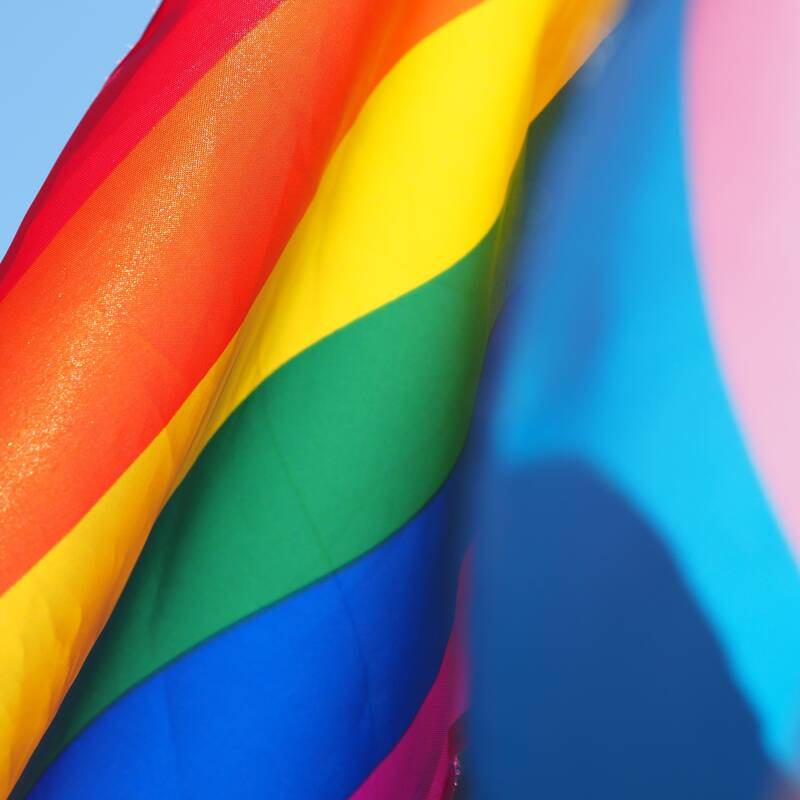
LGBT Travel in Botswana
Attitudes, the law & our experiences
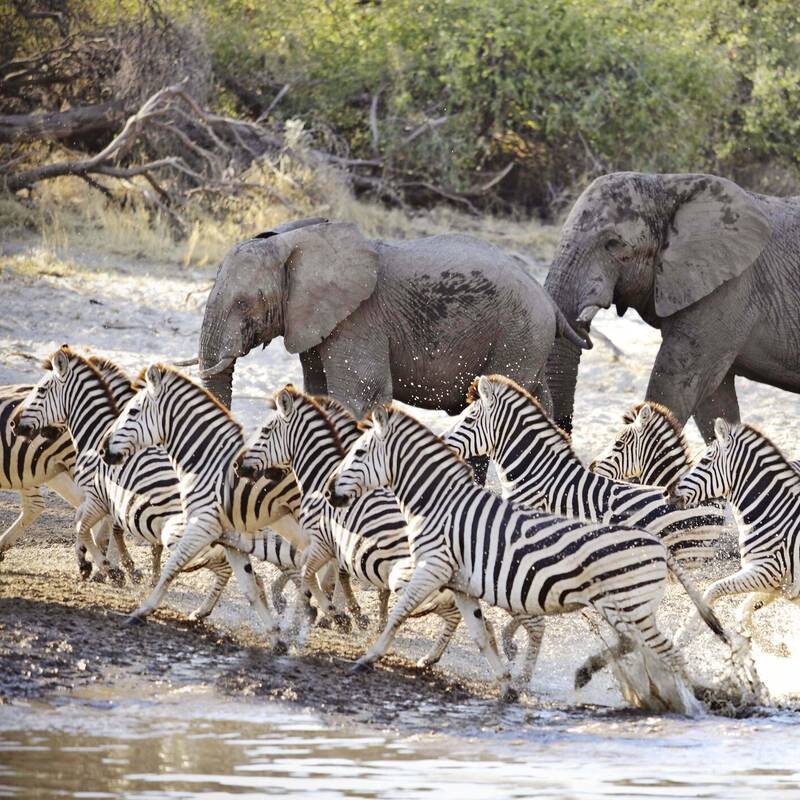
Migrations in Botswana
Seasonal wildlife migrations
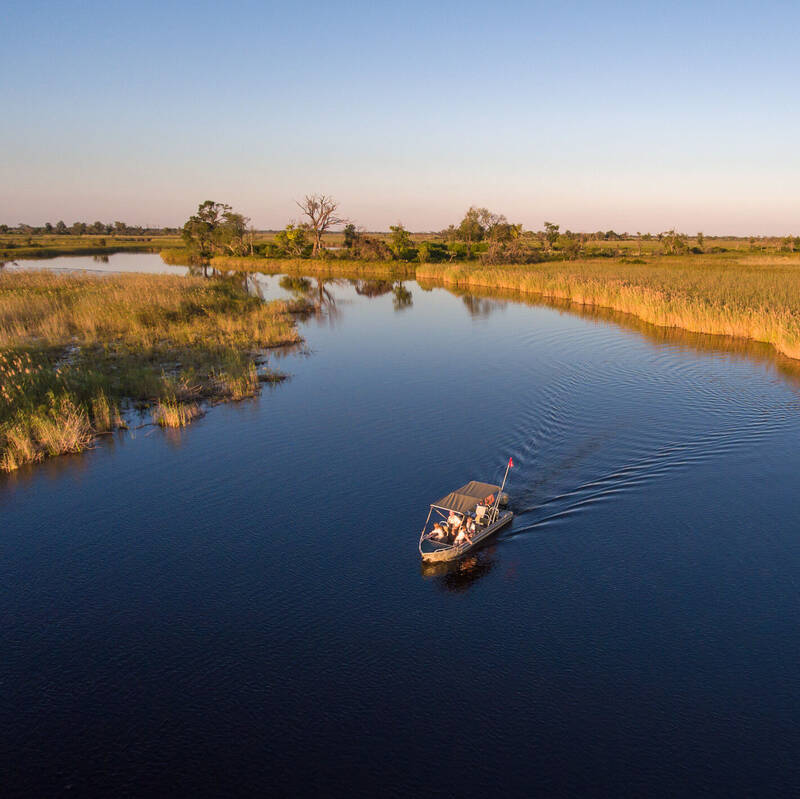
Okavango Delta Flood
Year on year flood water levels

Tipping in Botswana
Expectations & guidelines for tipping
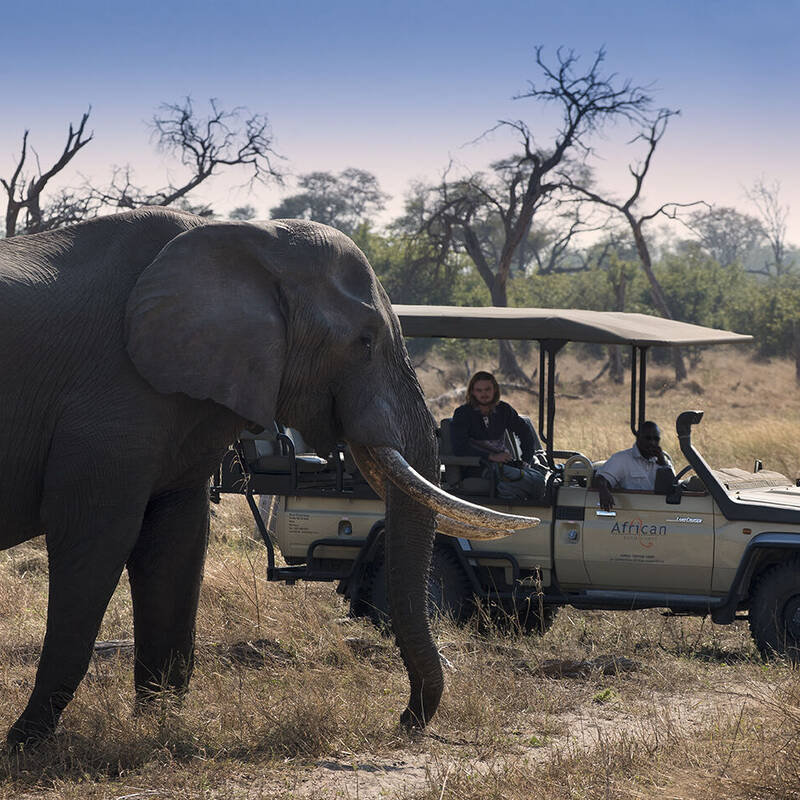
Types of Botswana safaris
Types of safari experiences
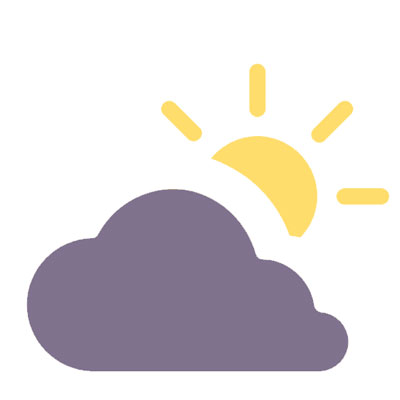
Weather & climate
The best time to visit Botswana
Excursions from Feline Fields
Optional extra day-trips and excursions possible whilst you're staying at Feline Fields. Talk to us: these are usually best arranged before you go.
Other lodges in North-west Kalahari & Panhandle
Alternative places to stay in this same area.
